A Detailed Timeline of Helen Keller's Life and Impact


Intro
Helen Keller stands as a towering figure in American history, not merely as a woman who overcame immense adversity, but as a beacon of hope and determination. Born in 1880, her life was characterized by challenges that many would deem insurmountable. From her earliest years, Helen faced the daunting realities of being deaf and blind, rendering her unable to communicate effectively with the world around her. Yet, through resilience and unwavering support from her teacher, Anne Sullivan, Keller transformed her life entirely.
This timeline will unpack the significant milestones in Keller’s journey—her early childhood struggles, educational triumphs, and groundbreaking advocacy for the rights of individuals with disabilities. Each moment captured provides insights not only into her personal journey but also how she played a pivotal role in reshaping societal perceptions towards education and disability rights.
Ultimately, Keller’s legacy is that of breaking down barriers, inspiring millions and demonstrating that the human spirit can triumph against all odds. The aim here is to highlight her contributions, both big and small, along with the essential impact she had on the world around her.
Early Life and Background
Understanding Helen Keller's early life and background lays the groundwork for appreciating her extraordinary achievements later in life. Keller's formative years were crucial, as they shaped her character, resilience, and ambitions. Notably, it is in the crucible of her early experiences that one can find the roots of her advocacy for disability rights and education reform. By examining this segment, readers gain insight into the challenges she faced and the support she received, which collectively contributed to her development as a leading figure in the 20th century.
Birth and Family
Helen Keller was born on June 27, 1880, in Tuscumbia, Alabama. She came into the world as a healthy infant, the first child of Arthur H. Keller and Kate Adams. The Keller family belonged to the upper-middle class, which afforded them certain advantages, including education and social standing. Helen's father was a newspaper editor, and her mother was a graduate of the prestigious women's college, the Letter Street Institute, which undoubtedly exposed them to progressive ideas of education and child-rearing.
The family dynamics were critical during her early years. With a loving yet strict disposition, Kate was particularly devoted to her daughter. After the illness that left Helen deaf and blind at a mere 19 months of age, Kate's unwavering commitment to finding help transformed both their lives. Watching her daughter struggle in silence intensified Kate's resolve to see Helen thrive despite her disabilities.
"Life is either a daring adventure or nothing at all." – Helen Keller
Initial Signs of Disabilities
Helen's hardships began when a severe illness struck, possibly scarlet fever or meningitis. This catastrophic event robbed her of her hearing and sight, thrusting her family into an uncharted territory of grief and concern. As a toddler, she exhibited frustrating behaviors, such as temper tantrums and aggressive actions, which were attempts to communicate her needs in an inaccessible world. The lack of proper ways to express herself became more than just a barrier; it darkened her world, making it a daunting place where isolation reigned.
The Keller household witnessed early glimpses of Helen's formidable spirit. Even as a toddler, she displayed an innate curiosity, trying to make sense of her surroundings through touch and smell. Despite her challenges, the desire to connect remained strong, leading to the family's realization that traditional methods of communication wouldn't suffice. They would soon embark on a transformative journey that would change Helen's life fundamentally.
To truly comprehend the extensive trajectory of Helen Keller’s life, one must consider the foundations laid in her early years. From her birth into a nurturing family to the onset of her disabilities, these formative experiences set the stage for her later triumphs over adversity.
Turning Points in Childhood
Turning points in childhood are often seen as pivotal moments that shape a person's future. For Helen Keller, this phrase takes on profound significance. Her early years were marked by considerable challenges, primarily due to her disabilities. However, these difficulties were met with transformative experiences that paved the way for her remarkable achievements. The arrival of Anne Sullivan, Keller's dedicated teacher, stands out as a critical juncture, not just for Keller's education but also for demonstrating the impact of a supportive relationship in overcoming barriers.
The Arrival of Anne Sullivan
In March 1887, the life of Helen Keller changed dramatically with the arrival of Anne Sullivan, a young woman with her own challenging past. Before Sullivan, Keller was like a ship lost at sea, unable to communicate or connect with the world around her. The relationship between the two women blossomed immediately. Sullivan employed various teaching methods, some unconventional, which were tailored specifically to Keller's needs. This included the use of manual sign language, which Keller could feel through Anne's hands.
"It's so simple, it's almost as if it was meant to be. Anne Sullivan unlocked the world for Helen."
Sullivan's patient guidance was not only vital in helping Keller learn to communicate but also in fostering her confidence. Under her meticulous instruction, the world became more than just shadows and noises; it became a place filled with words, ideas, and friendships. This critical relationship demonstrated the importance of tailored educational methods and the significant role of personal connection in teaching. It’s a classic tale of an enduring bond between a mentor and her student who would go on to champion for others.
Breakthrough Moments in Learning
Once the dam broke in terms of Keller's understanding, she exhibited a remarkable capacity for learning. The turning point came shortly after Sullivan began teaching her. One of the most iconic moments occurred when Sullivan spelt the word "W-A-T-E-R" into Keller's hand while they stood by the water pump. The instant realization of what those symbols meant flipped a switch in Keller’s mind. It was at that moment she understood the essence of language – that there were words to describe her world.
From then on, Keller's education accelerated. She quickly learned new words and could express her thoughts. The learning process continued to be filled with breakthrough moments:
- Learning to read and write using Braille, this opened up an entirely new realm of literature.
- Communicating with others, including fellow students and educators, which bolstered her social interactions.
- Exploring subjects such as history and mathematics, demonstrating that her capabilities extended well beyond basic communication.
Each of these milestones didn't just build her academic foundation, they also fortified her belief in herself and her potential. Keller did not merely learn to communicate; she became empowered, shaping her future as a noted author, activist, and lecturer. Her childhood was marked not just by trials, but the powerful turning points that enabled her to redefine what it meant to live and contribute as a person with disabilities.
Education and Personal Development
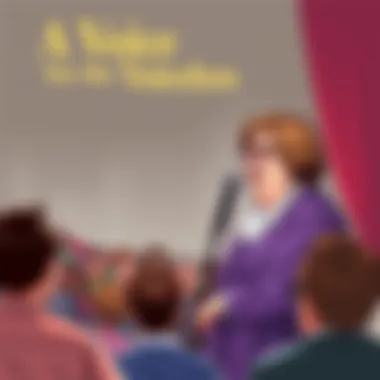
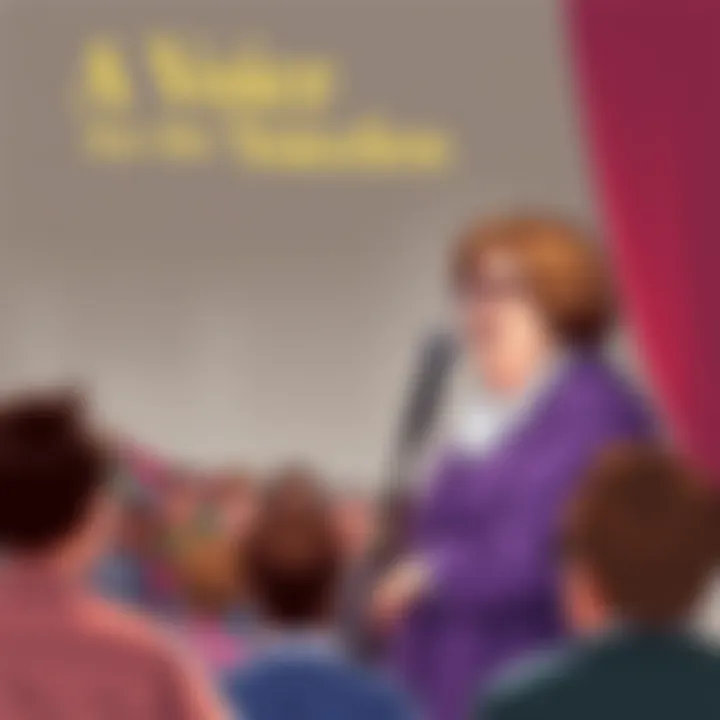
Helen Keller’s education and personal development stand as foundational stones in her journey toward becoming a global icon. Her story exemplifies the profound impact education can have in overcoming barriers. Education was not just an avenue for academic achievement; it was a tool for liberation and empowerment. Keller's experiences underscore the critical importance of providing quality education tailored to individual needs, particularly for those facing disabilities.
Education transformed the world around Helen, turning her into a beacon of hope for many. The development of her personal identity, intellect, and capacity for understanding were directly influenced by her educational encounters. With the right guidance, she proved that limitations could be surpassed. Education for Keller meant the ability to advocate for herself and others, nurturing the burgeoning leader within her.
Attendance at Radcliffe College
In 1900, Keller entered Radcliffe College, becoming the first deaf-blind woman to earn a Bachelor of Arts degree. This was no small feat. Helen faced not just academic hurdles but also societal prejudices; many doubted her abilities and saw her disabilities as insurmountable obstacles. However, armed with her fierce determination and the unwavering support of her teacher, Anne Sullivan, Keller defied expectations.
At Radcliffe, she explored various subjects, from history to literature, and developed her critical thinking skills. Helen's time at Radcliffe was more than just gaining knowledge; it was about claiming her place in a world that often dismissed her potential. This period also highlighted the vital role of educators in adapting methods of instruction to suit diverse learning needs. Keller’s triumph in academia set a precedent, inspiring future generations to advocate for inclusive education.
Literary Contributions
Helen Keller's literary contributions are significant, shaping how people with disabilities are perceived and understood. Through her writing, she articulated the struggles and triumphs of living with disabilities, offering insight into a world that many found difficult to fathom. Her works are vivid narratives that encourage empathy and understanding.
The Story of My Life
The Story of My Life, published in 1903, represents a defining work in Keller's literary journey. It offers readers a firsthand account of her early experiences, struggles, and triumphs. The self-awareness displayed in the book is striking; Helen captures her emotional landscape with vivid detail, making her experiences relatable even to those without disabilities. This book serves as a testament to the power of resilience and the human spirit.
The key characteristic of The Story of My Life is its raw honesty. By sharing her innermost thoughts and feelings, Keller invites readers to walk alongside her. This openness has made her work a popular choice in educational settings, often encouraging discussions about disability and human rights. The unique feature of the book lies in its timeless relevance; it continues to resonate with audiences today, decades after its publication.
However, there are considerations to keep in mind. Some readers might find it challenging to relate to Keller's unique experiences. Yet, the benefits of understanding her perspective far outweigh these challenges. The narrative is powerful in helping readers grasp the potential of individuals deemed "different."
Other Notable Works
Beyond The Story of My Life, Keller authored several other notable works, including The World I Live In and Out of the Dark. These pieces further demonstrate her exceptional talent and provide insights into her evolving perspectives. In The World I Live In, Keller explores her philosophical views on life and her experience of being deaf and blind. She emphasizes the notions of inner strength and capability, stressing that one’s abilities should define them more than limitations.
The key characteristic of Keller’s other works is their thematic depth. They serve as not only personal reflections but also as universal lessons on overcoming adversity. Each piece contributes to a broader understanding of the human condition, encouraging readers to rethink their assumptions about disabilities. One unique feature is the philosophical lens through which she views her surroundings. This perspective enriches the narrative and urges readers to engage with her ideas critically.
In weighing the advantages of these other works, they provide a broader context to Keller’s life, showing her as a multifaceted individual. They help to celebrate her intellectual legacy, but might also be perceived as challenging to some readers due to their philosophical nature. Regardless, they remain vital to understanding her influence.
"Optimism is the faith that leads to achievement. Nothing can be done without hope and confidence." - Helen Keller
Overall, Keller's literary contributions are not merely autobiographical but serve as catalysts for discussions about the capabilities of individuals with disabilities. These works remind us that education, coupled with personal determination, can unleash the potential for greatness against all odds.
Advocacy and Activism
Helen Keller's life was not just about personal triumph over disabilities; it also encompassed a compelling narrative of advocacy and activism that reshaped societal views on disability. This section aims to underline her significance as a key figure in actively working towards transformative change for the hearing and visually impaired, as well as advocating for women's rights.
Championing Disability Rights
Keller dedicated herself to raising awareness about the challenges individuals with disabilities faced. Her tireless efforts and unyielding resolve brought the issues of inclusivity and equity into the limelight, laying the groundwork for future policies regarding disability rights.
She once expressed her determination with the words, "Alone we can do so little; together we can do so much." This sentiment embodies the core of her advocacy. Keller collaborated with various organizations, including the American Foundation for the Blind, to promote initiatives that improved the quality of life for the disabled community.
A few key aspects of her activism include:
- Education Access: Keller emphasized the importance of accessible education. She fought for proper facilities and resources, believing that everyone deserves an education regardless of their physical limitations.
- Employment Opportunities: She championed the right for people with disabilities to find meaningful work, pushing for legislation that protected their rights in the workplace.
- Public Awareness: Keller worked to educate the general public about the abilities of individuals with disabilities, often emphasizing that these individuals could lead fulfilling, productive lives given the right support.
"The most beautiful things in the world cannot be seen or even touched, they must be felt with the heart." This quote serves as a reminder that true understanding comes from empathy and compassion, qualities Keller cultivated in her advocacy efforts.
Women’s Suffrage Movement
In tandem with her disability rights efforts, Keller was also a vocal supporter of the women's suffrage movement. She recognized that the fight for equality spanned beyond disabilities, advocating that all women deserved equal rights in society.
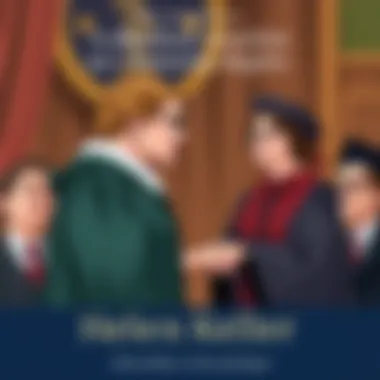
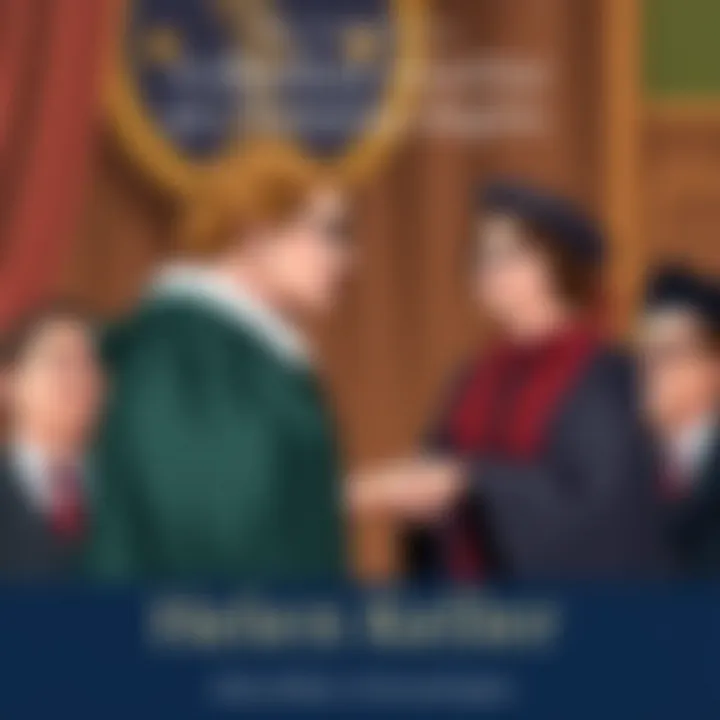
Keller's participation in rallies and public speeches highlighted her belief that freedom and independence were not just for some, but for all members of society. She made no secret about her disdain for the barriers that kept women from participating in democratic processes. Her activism for women's rights was deeply intertwined with her work for disability rights, reflecting her understanding that these movements shared the same goal: achieving equality.
Some significant contributions of Keller in this movement included:
- Public Speaking: She spoke at numerous events, connecting the dots between women's rights and disability rights, and inspiring many to join the cause.
- Collaborating with Organizations: Keller worked with various feminist groups, lending her voice and credibility to the fight for suffrage.
- Writing Urgent Appeals: Through her writings and publications, Keller urged society to consider the unique challenges faced by women who were also disabled.
In essence, Helen Keller's enduring legacy as an advocate illustrates the profound impact one individual can have not just on the lives of others, but on the broader societal norms and laws that govern lives. Her dual advocacy for disability rights and women's suffrage served as a cornerstone for future movements, painting a picture that echoes through generations.
International Influence
Helen Keller’s journey transcends borders and cultures, making her a global symbol of resilience and determination. Her international influence is not merely a reflection of her travels and lectures; it signifies her ability to resonate with diverse audiences. By sharing her life story, she shed light on the broader issues faced by people with disabilities around the world. Keller’s work has sparked discussions on accessibility, education, and civil rights that extend to various corners of the globe.
Travel and Lectures Worldwide
In her quest to advocate for the rights of the disabled, Helen Keller embarked on extensive travels, reaching many countries and engaging with thousands during her speaking events. In the early 20th century, she traveled across Europe, Asia, and even Australia, breaking down barriers and preconceived notions that often surrounded the disabled.
- Europe: During her trips, she exchanged ideas with prominent figures and attended events that influenced disability rights across the continent. For instance, in France, she met the famous physicist Marie Curie, discussing shared pursuits for advancement in science.
- Asia: Keller’s lectures in Japan and India were pivotal in challenging societal perceptions. Her presence sparked meaningful conversations about conditions and education opportunities available for the deaf and blind individuals.
- The Americas: In her home country, Keller visited various states where she promoted social change, often pushing local governments to improve infrastructure for people with disabilities.
Through her speeches, Keller addressed critical topics such as the right to education and the need for societal understanding. She famously said, > "The most beautiful things in the world cannot be seen or even touched, they must be felt with the heart."
Prologue to Global Perspectives on Disabilities
Keller’s international work helped broaden perspectives on disabilities across different cultures. Before her time, many countries held narrow views on what individuals with disabilities could achieve. Keller's message diffused through the classrooms and assemblies she attended and led—urging society to recognize the potential within everyone, regardless of their physical limitations.
- Cultural Exchange: Keller’s exchanges were not one-sided; she learned from the various cultures she visited, gathering insights on educational methods and societal views. For example, the traditional rehabilitation approach in Japan offered a unique viewpoint on integration in society, contrasting with Western methods.
- Legislative Influence: Her influence also reached lawmakers. In various countries, her advocacy led to revisions in laws and the implementation of policies focused on enhancing the quality of life for disabled individuals. Her speeches became a catalyst for legislation aimed at ensuring better educational facilities and rights for the disabled.
- Global Movements: Keller inspired countless movements dedicated to advocating for individuals with disabilities. Organizations founded during her lifetime, like the American Foundation for the Blind, now operate on a global scale, reinforcing Keller’s message that people with disabilities possess unique abilities worthy of recognition.
Keller’s tireless efforts continue to echo in modern discussions surrounding disability rights and humanitarian initiatives. Today, her work inspires a generation that champions equity and understanding on a global scale. As we look back at her life, we see how one individual can indeed influence countless lives, ultimately shaping the world for the better.
Later Years and Legacy
Helen Keller's later years were marked by a profound reflection on her life and contributions, as well as a lasting imprint on society. This stage of her life is crucial in understanding how she embraced her fame and used her voice to advocate for the rights of the marginalized. By discussing Keller's legacy, we can see the extensive influence she had not only in her time but also in shaping future generations' views on disability and education.
Reflections on Life and Work
In her later years, Keller often took time to reflect upon her life’s journey. She had a unique perspective shaped by overcoming significant adversity that many could not fathom. Keller once penned, "Optimism is the faith that leads to achievement. Nothing can be done without hope and confidence." This phrase captures her belief that positivity could drive change.
Her reflections serve to inspire not just those with disabilities but for anyone facing difficulties. Keller wrote extensively about her life, with The Story of My Life offering a rich narrative full of challenges, triumphs, and revelations about the human spirit.
In her remembrances, Keller often spoke to the importance of perseverance. She acknowledged, "Character cannot be developed in ease and quiet. Only through experience of trial and suffering can the soul be strengthened, ambition inspired, and success achieved."
Through her writings and speeches, she motivated others to find their strength, encouraging a generation to advocate for its own rights and pursue knowledge against the odds. Her work went beyond just her personal accomplishments; it served as a rallying cry for social justice, intertwining personal experience with a broader social mission.
Influence on Education Systems
Helen Keller's educational philosophy made profound contributions to educational systems worldwide. She championed the view that education should be accessible to everyone regardless of disabilities. This belief deeply influenced educational practices, including specialized methods tailored for various disabilities.
Keller’s advocacy for the inclusion of disabled individuals in standard educational settings fostered changes in teaching methods, making them more inclusive. Her correspondence and work with educators highlighted the need for better resources and training to equip teachers to handle diverse learning requirements.
Her historical involvement in educational reforms resulted in various initiatives. These included:
- Improvement of teaching strategies for blind and deaf students.
- Promotion of sign language in educational institutions.
- Contribution to the development of textbooks that catered to the needs of disabled learners.
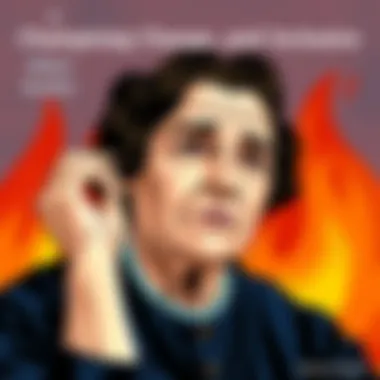
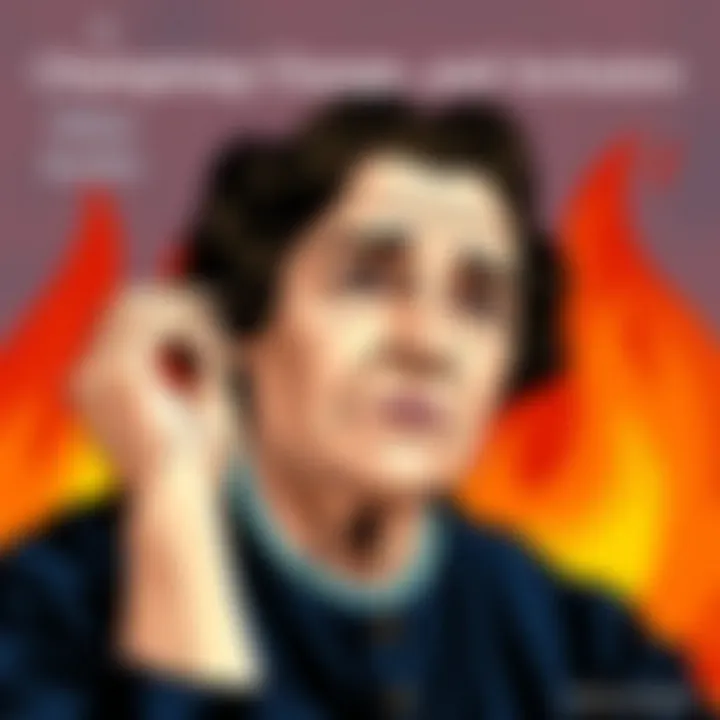
The legacy of Keller's work is clear. Education systems have implemented reforms aimed at equipping children with disabilities with the tools they need for success. Institutions today continue to credit her advocacy for the more inclusive environments we strive for, ensuring that every child has the opportunity to learn and grow.
"The highest result of education is tolerance." – Helen Keller
Her life and teachings remain vital in the fight for equality in education access, shaping their strategies and policies to support students from diverse backgrounds.
Commemoration and Recognition
Commemoration and recognition play a vital role in cementing a figure's legacy, particularly when it comes to someone as significant as Helen Keller. By celebrating her contributions to literature, education, and civil rights, society not only honors her achievements but also emphasizes the importance of inclusivity and respect for all individuals, regardless of their abilities. Keller's life is a testament to overcoming adversity, and acknowledging her journey encourages others to pursue their own paths of resilience and success.
Awards and Honors
Helen Keller's work has not gone unnoticed; she has received numerous awards and honors throughout her life, both during her lifetime and posthumously. Such recognition helps keep her spirit alive while promoting the causes to which she dedicated herself. Some of the prominent awards include:
- Presidential Medal of Freedom: This award is one of the highest civilian awards in the United States, recognizing Keller's significant contributions to the country and the world, especially in advocating for people with disabilities.
- The Helen Keller Archive: Established to preserve her writings and legacy, this archive continues to inspire scholars and activists.
- The National Women's Hall of Fame: Keller was inducted into this prestigious organization, highlighting her role in the women's suffrage movement.
- United Nations Honorary Member of the International Workers' Congress for her efforts in advocating for the rights of those with disabilities.
These recognitions underscore her impact but remind future generations that every small achievement can accumulate into something great. Notably, organizations like the American Foundation for the Blind continuously promote awareness and education regarding Keller's legacy, ensuring her work remains relevant.
Cultural Impact in Media and Education
The reverberations of Keller's life can be seen across various media formats, reinforcing her significance in modern culture. Documentaries, movies, and television programs often highlight her story, reminding audiences of her unwavering spirit. For instance:
- The 1962 film, "The Miracle Worker," painted a vivid picture of Keller's early struggles and triumphs with the help of her teacher Anne Sullivan.
- Numerous books and educational materials continue to be published, adapting her story for younger audiences, thus ensuring that the essence of her accomplishments is passed down.
Helen Keller's life has also become a case study in schools, not just within the realm of special education programs but in general education as well. Her journey illustrates tenacity in face of adversity, teaching valuable lessons about empathy, determination, and the importance of communication.
In contemporary discussions about disability rights, Keller's legacy serves as a cornerstone, inspiring various movements and individuals toward a more inclusive society. Her influence persists in ongoing advocacy for the rights of people with disabilities. The work she accomplished continues to inform current educational practices and policies, guaranteeing that her legacy will endure for future generations.
"Optimism is the faith that leads to achievement. Nothing can be done without hope and confidence." - Helen Keller
Discover more about Helen Keller's legacy at resources such as Wikipedia and Britannica to further engage with her contributions and the ongoing implications of her work in various sectors.
Helen Keller Today
Examining the impact of Helen Keller in today’s world offers a window into her lasting relevance. Keller’s life and work resonate with a myriad of individuals—students, educators, and activists alike. Her journey isn't just a record in the past; it's a beacon for those navigating the complexities of disability.
In our contemporary society, Keller symbolizes the power of perseverance. Understanding her story encourages individuals to challenge the perception of limitations. For children growing up with disabilities, her narrative becomes a powerful reminder that they are capable of achieving their dreams, often against the odds. This message extends into the realm of education, where teaching about Keller empowers young learners to embrace differences and fosters an inclusive environment.
Modern Interpretations of Her Work
Keller's works, especially her autobiography, "The Story of My Life," continue to be studied and adapted in numerous educational forms. Schools incorporate her writings in literacy programs, using her experiences to teach resilience, empathy, and the importance of amplifying unheard voices.
- Literature and Film: Various adaptations of Keller’s life in literature and film highlight her struggles and achievements, bringing her story to new audiences. For instance, the dramatization of her childhood in plays like "The Miracle Worker" dramatically illustrates her connection with Anne Sullivan and her ongoing fight for understanding and acceptance.
- Educational Curricula: Modern educational frameworks incorporate Keller's lessons on advocacy and communication. By analyzing her methodologies, students learn not just about her life but also about the broader contexts of social justice and equality.
This evolution in how we interpret her work encourages critical thinking and compassion among students, reminding them that understanding and kindness are central to progress.
Continuing Influence on Disability Rights
Keller's advocacy laid the groundwork for a broader movement aimed at securing rights for individuals with disabilities. Her achievements are not merely historical footnotes; they continue to inspire current discourse and activism around disability rights.
- Legislation and Awareness: Keller promoted legislation that emphasized education and access for individuals with disabilities. Today, her spirit of advocacy can be seen in ongoing efforts, like the Americans with Disabilities Act, which aims to ensure that individuals with disabilities have equal opportunities in various aspects of life, from employment to public services.
- Community Activism: Organizations today echo Keller’s fight by promoting awareness and education about disabilities at grassroots levels. Nonprofits work tirelessly to dismantle stereotypes and create an inclusive environment. Keller's belief in the importance of community support emphasizes that progress is a collective responsibility.
Keller's legacy serves as a constant reminder of the necessity for continued advocacy, ensuring that every individual’s voice is heard, regardless of their abilities.
"Alone we can do so little; together we can do so much." – Helen Keller
Through ongoing interpretations of her work and her enduring impact on disability rights, Helen Keller remains a vital figure in both history and contemporary discussions about equality and access. She symbolizes the strides made, while urging society to keep pushing forward.
For those who wish to explore more about Helen Keller’s life and her profound influence, resources such as Wikipedia and Britannica provide extensive insights.
Also, forums like Reddit provide platforms for discussions around her work and ongoing advocacy efforts for individuals with disabilities.















